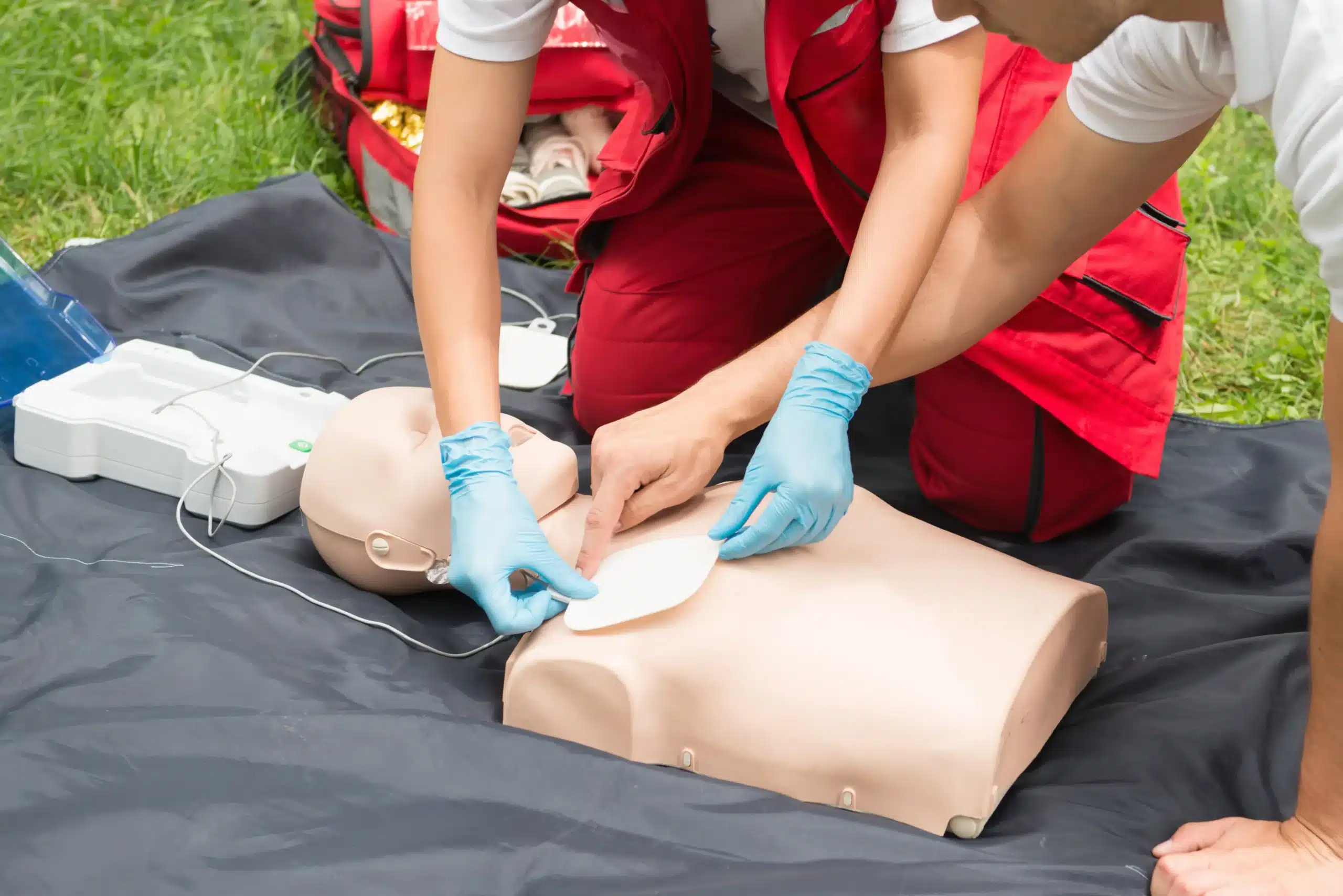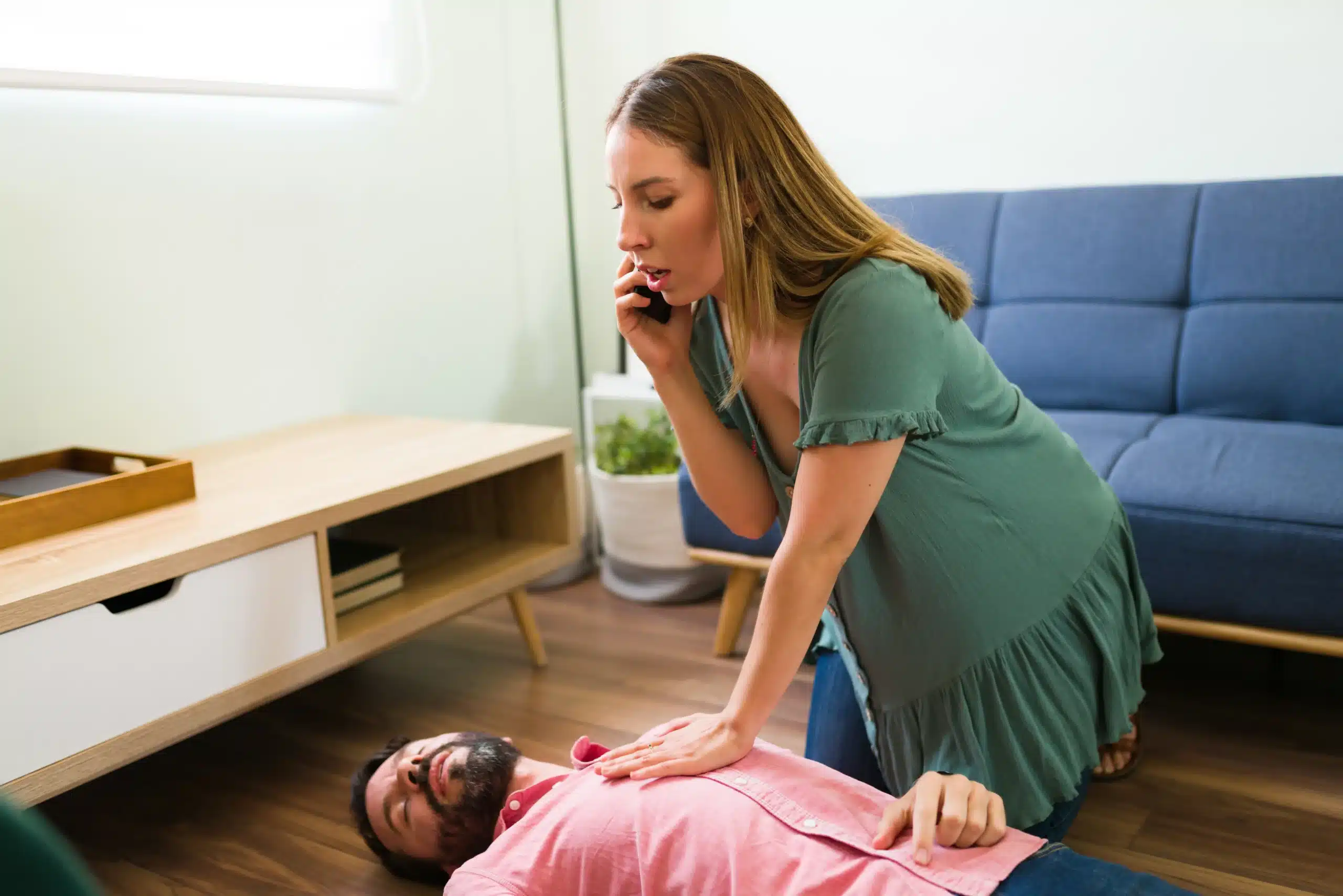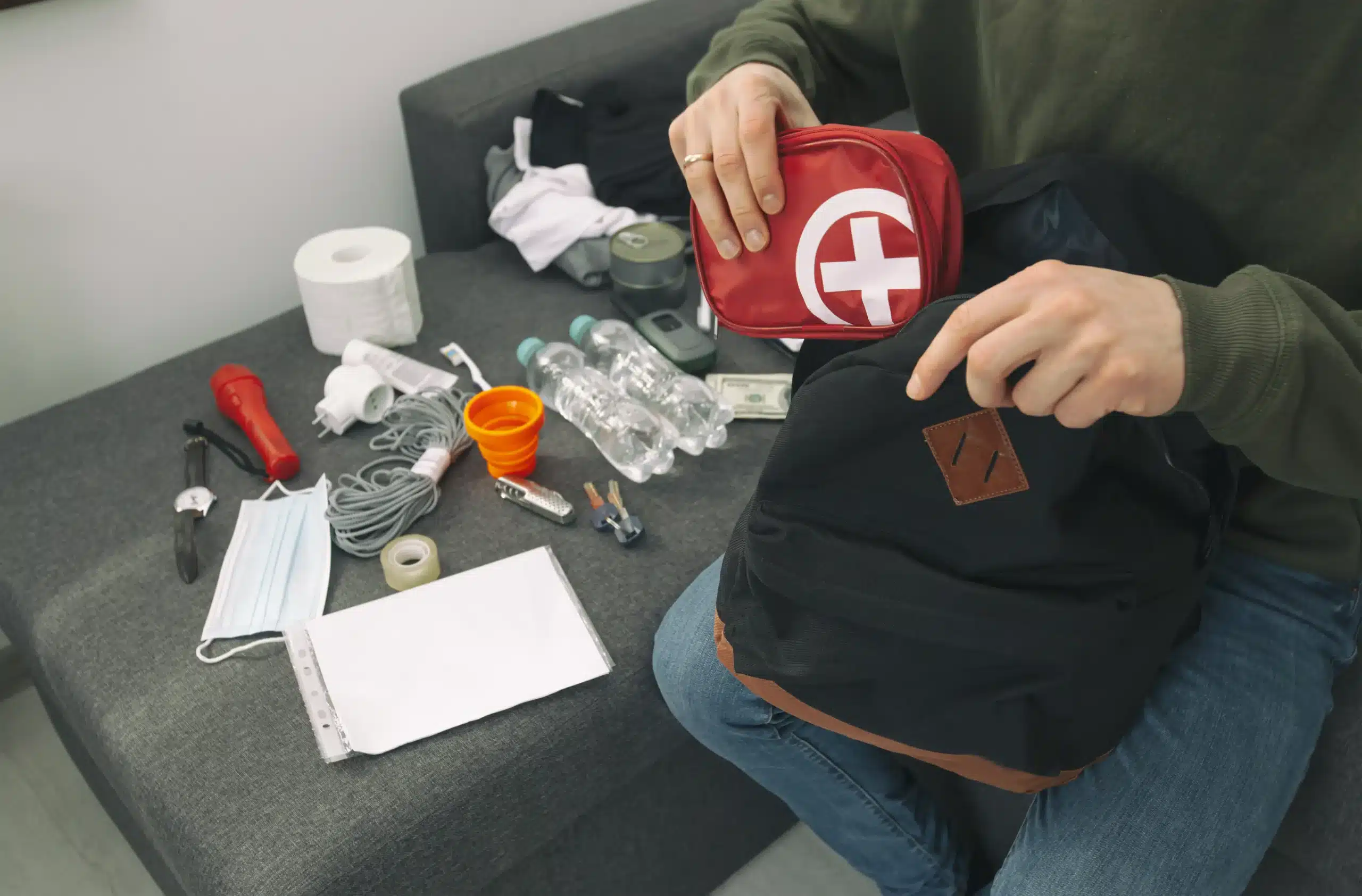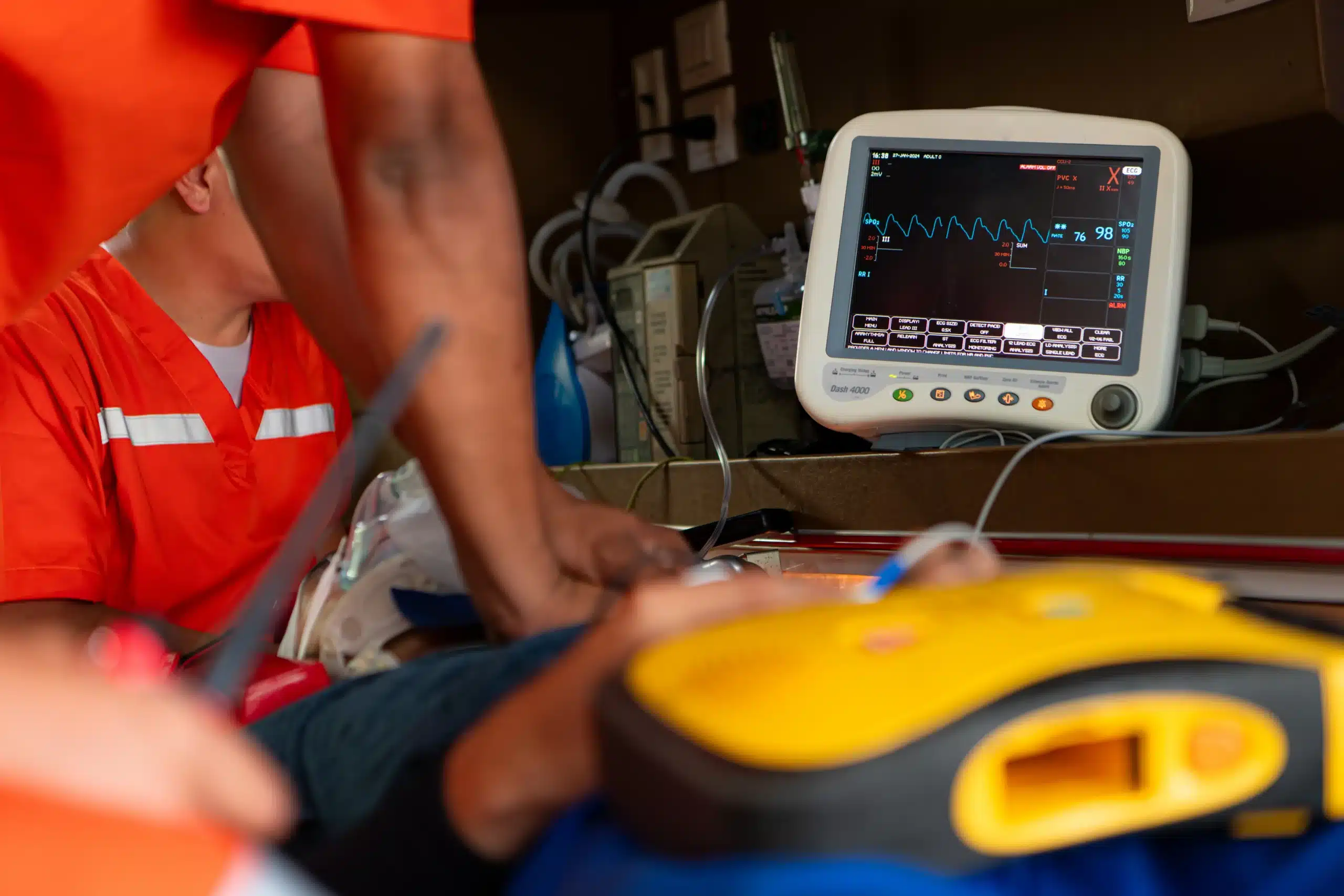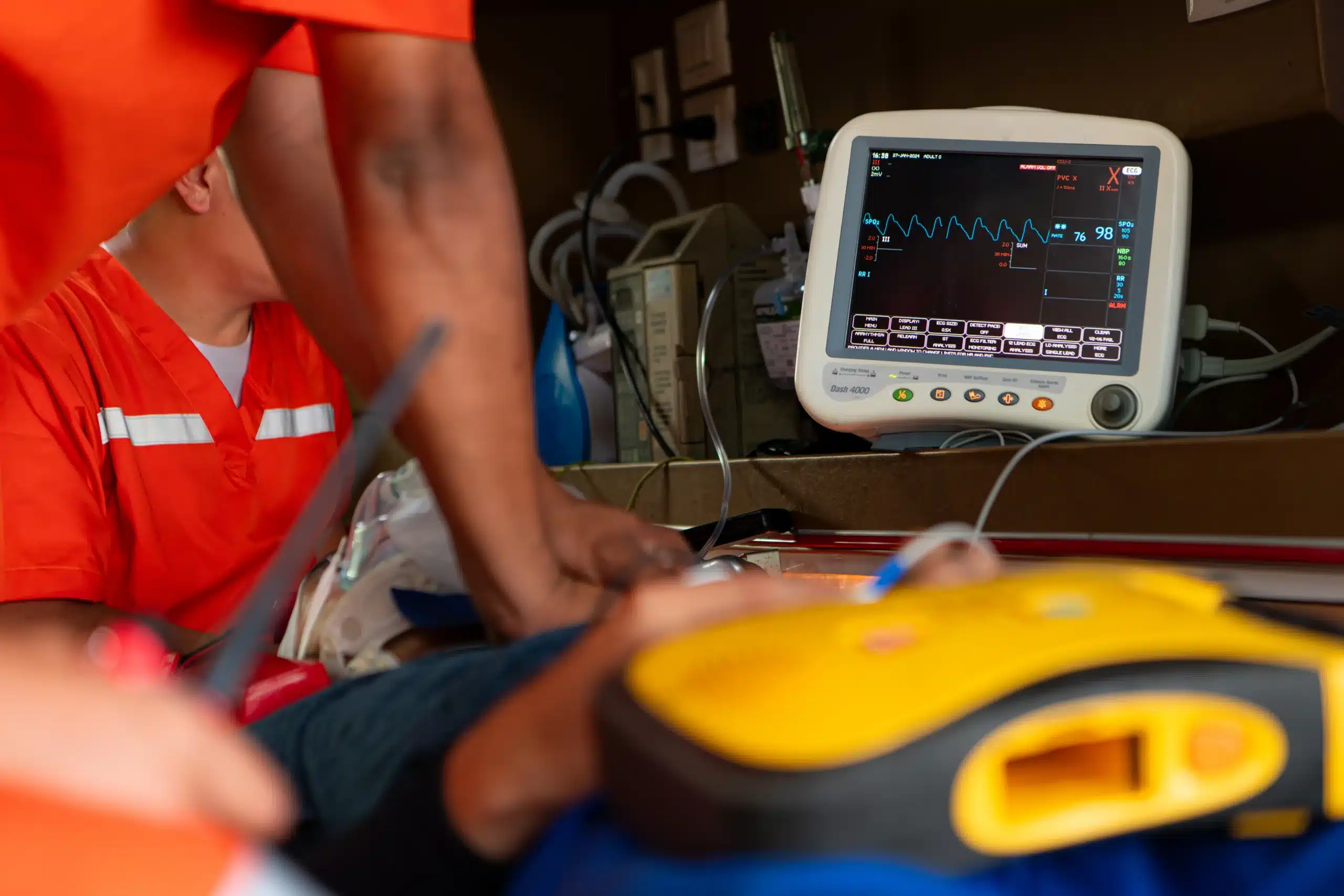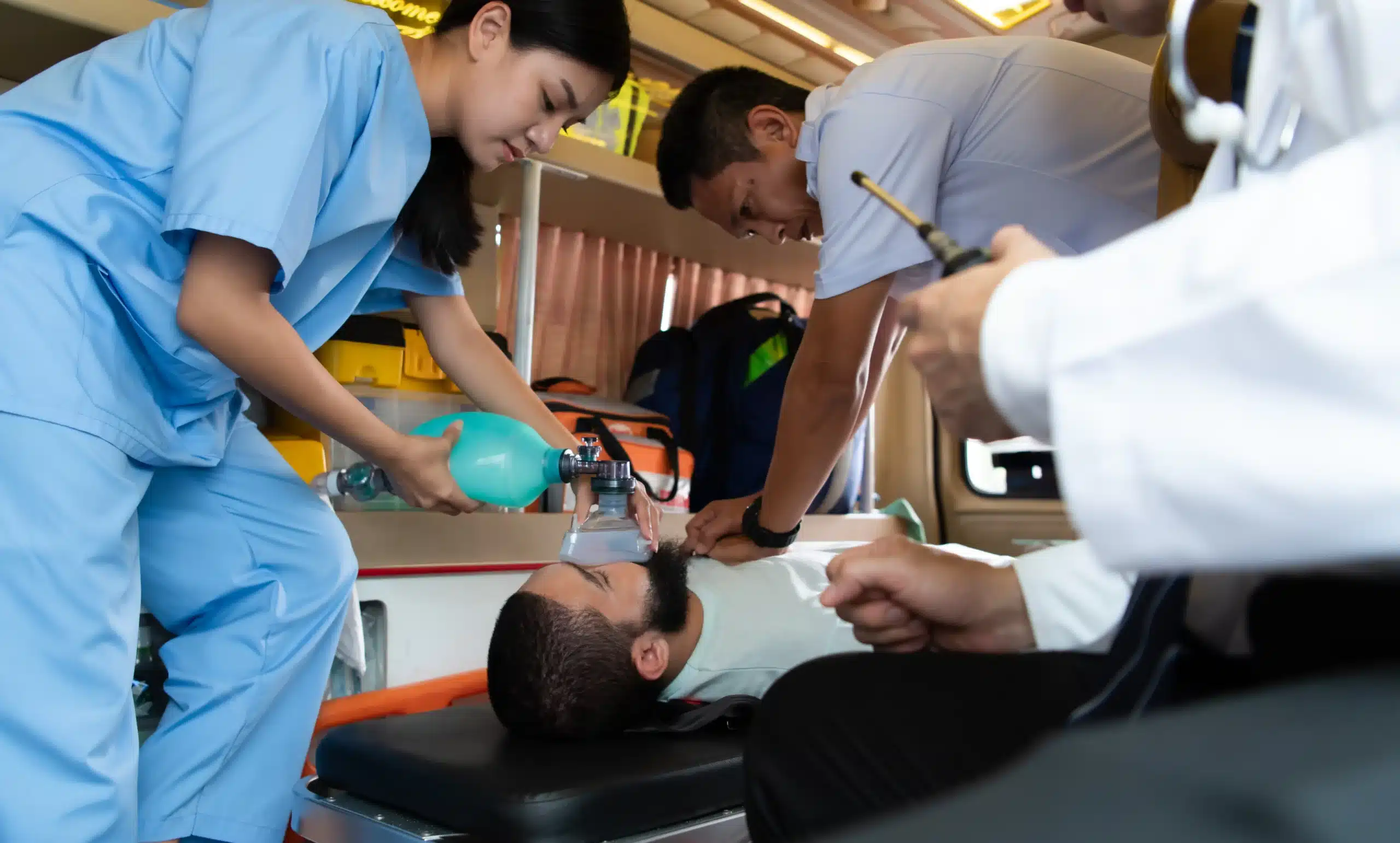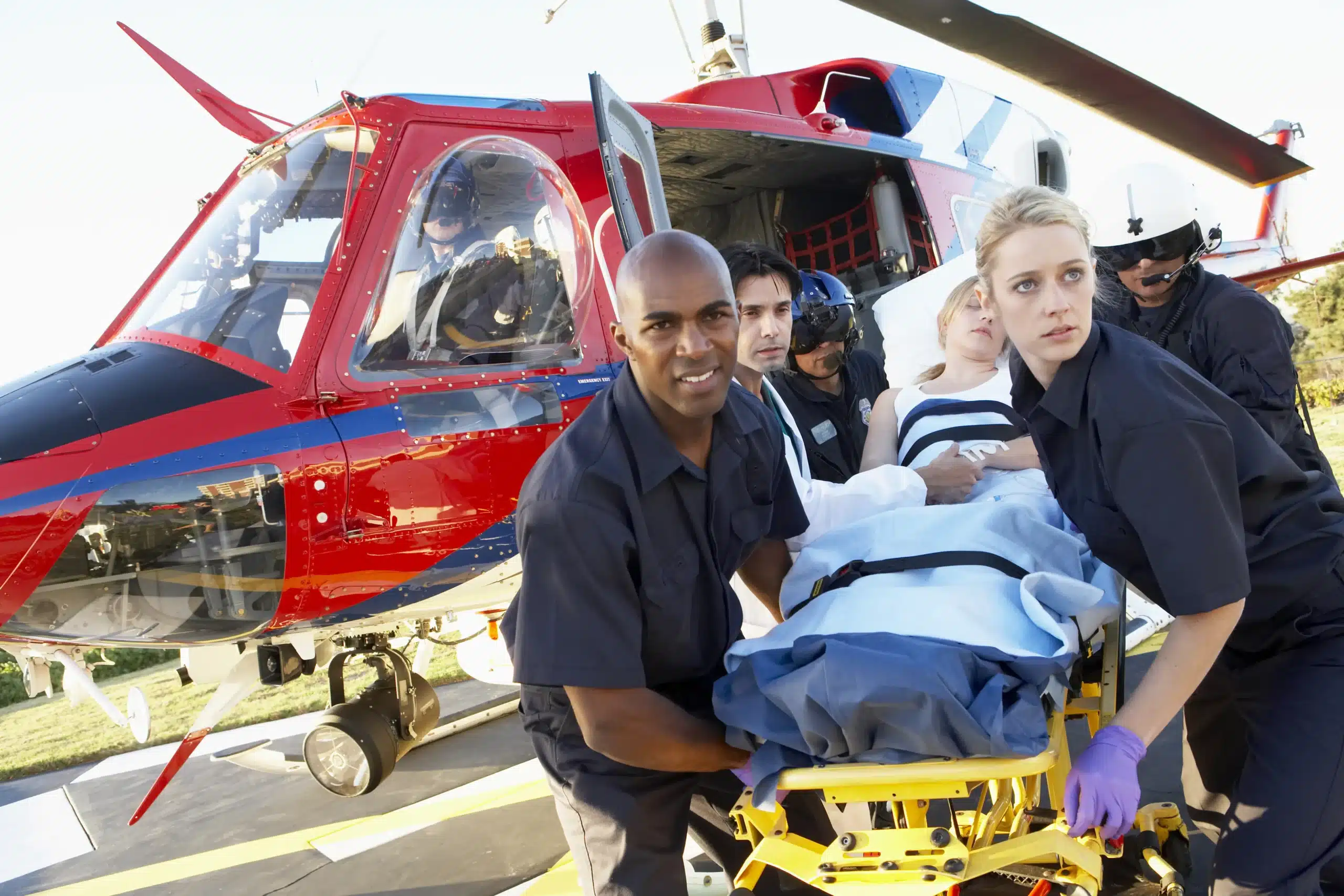Emergencies can happen anytime, anywhere. Would you know what to do? BLS training empowers you to respond effectively in those critical moments when seconds count. This guide takes the mystery out of BLS certification, explaining what it is, why it matters, and how to find the perfect “bls training near me.” We’ll cover everything from the core skills taught in BLS courses to choosing the right training provider and understanding the certification process. Whether you’re a healthcare provider or simply want to be prepared for anything, this guide is your roadmap to becoming BLS certified.
Key Takeaways
- BLS skills save lives: Equipping yourself with BLS training means you can confidently respond to medical emergencies, providing crucial care until professional help arrives. It’s about being prepared and empowered to make a difference.
- Choose your BLS training wisely: Research different providers, considering their reputation, course format (online, in-person, or hybrid), and what’s included in the cost. Finding the right fit for your learning style and schedule is key.
- Maintain your skills: BLS certification requires periodic renewal. Stay current with the latest guidelines and techniques to ensure your skills remain sharp and effective in real-life situations.
What is BLS Training & Why Do You Need It?
BLS training gives you the skills to respond to life-threatening emergencies. It emphasizes early CPR and high-quality chest compressions, which can dramatically improve a person’s chance of survival. Beyond CPR, BLS teaches you how to recognize and manage someone who is choking or having a heart attack. It also covers using automated external defibrillators (AEDs) and other essential first-aid techniques.
What BLS Is and Why It Matters
Basic Life Support (BLS) certification focuses on providing immediate care in the critical moments of a medical emergency. A good BLS certification course follows guidelines from organizations like OSHA, ILCOR, and the ECC, ensuring your training meets nationally and internationally recognized standards. Whether you learn online or in person, BLS training equips you with practical skills and the confidence to act quickly and effectively. This training provides a crucial foundation for anyone working in healthcare, from doctors and nurses to EMTs and paramedics. It also empowers individuals in other professions to respond effectively in crisis situations.
Who Needs BLS Certification?
While healthcare providers, like doctors and nurses, definitely benefit from BLS training, it’s valuable for anyone who wants to be prepared for an emergency. Think childcare providers, camp counselors, fitness trainers—anyone who interacts with people regularly. BLS certification empowers you to provide immediate care, potentially bridging the gap until professional medical help arrives. This quick action can significantly impact someone’s chances of recovery. Having a solid understanding of BLS principles can make a real difference in any environment, from the workplace to the home.
Common BLS Misconceptions
One common misconception is that BLS is only for medical professionals. That’s simply not true. Anyone can—and should—learn these lifesaving skills. Another misconception is that once you’re certified, you’re good to go forever. Like most certifications, BLS requires periodic renewal to stay up-to-date with the latest guidelines and techniques. Regular recertification ensures you can confidently and effectively respond to emergencies. It also demonstrates a commitment to maintaining a high standard of care, which is valuable in both personal and professional settings.
Find the Right BLS Training Near You
Finding the right BLS training can feel overwhelming, but it doesn’t have to be. Here’s a breakdown of common places to find BLS certification courses:
Rocklin CPR Classes
If you’re in Rocklin, Roseville, or Sacramento, California, Rocklin CPR Classes offers a convenient option for AHA-aligned BLS training. They provide a range of courses, including BLS, ACLS, PALS, and First Aid, often with flexible scheduling and group discounts. Visit their website for course schedules and pricing. For those specifically seeking BLS certification, their BLS course page has more details.
American Red Cross
The American Red Cross is a well-known provider of BLS training nationwide. They offer various learning formats, including in-person classes and blended learning (a combination of online coursework and in-person skills sessions). This flexibility allows you to choose the learning style that best suits your needs. You can search for BLS courses by location on their website.
American Heart Association
While the American Heart Association (AHA) doesn’t directly teach courses, they set the standards for BLS training. Many organizations and training centers offer AHA-aligned BLS courses. Finding a course that adheres to these guidelines ensures you receive high-quality, up-to-date training. Training centers, like HealthForce Training Center, often provide helpful resources and information on AHA BLS courses. You can also check the AHA website directly for more information.
Local Hospitals & Medical Centers
Many hospitals and medical centers offer BLS certification courses, often open to both healthcare professionals and the public. These courses are usually taught by experienced medical professionals and may provide access to advanced medical equipment for hands-on practice. Check with hospitals and clinics in your area for course availability and registration information.
Community Colleges
Community colleges frequently offer BLS training as part of their continuing education programs. These courses are often more affordable than those offered by private training centers and can be a good option for those seeking a more structured learning environment. Contact your local community college to inquire about BLS course offerings.
Compare BLS Course Options
Choosing the right BLS course often comes down to personal preference, learning style, and schedule. Let’s break down some key factors to consider when comparing your options.
In-Person, Online, or Hybrid?
Think about how you learn best. In-person BLS training offers hands-on learning and direct interaction with an instructor. This is ideal for those who thrive in a traditional classroom setting and value immediate feedback. Online BLS courses provide flexibility, allowing you to learn at your own pace from anywhere with an internet connection. Many providers also offer a blended learning or hybrid approach, combining online coursework with in-person skills practice. This gives you the best of both worlds. For example, Roseville CPR Classes offers this blended learning style.
Course Length & Certification Validity
BLS certification equips you with essential life-saving skills, including CPR, AED use, and recognizing cardiac arrest. This empowers you to respond effectively in medical emergencies. BLS certification differs from general CPR training by focusing on the skills healthcare providers and other emergency responders need. Course length can vary, so check with your chosen provider for specifics. Also, confirm the certification’s validity period, as you’ll need to recertify periodically to maintain your skills. Rocklin CPR Classes offers various course schedules to fit your needs. More information on BLS courses can be found on Safety Training Seminars.
Costs & What’s Included
Course costs can vary depending on the provider, format (in-person, online, or hybrid), and included materials. Often, the cost covers materials like textbooks or online resources, your certification card, and access to practice materials or refresher courses. Don’t hesitate to ask potential providers about any additional fees or what their course fee covers. Understanding the full cost upfront helps you budget accordingly. Safety Training Seminars offers more information on what’s typically included in CPR and first-aid courses.
Group Discounts & Special Offers
If you’re training a group, such as colleagues or a community organization, inquire about group discounts. Many providers offer reduced rates for group bookings, making it more cost-effective. Rocklin CPR Classes offers group discounts, making group training easier and more affordable. Keep an eye out for special offers or promotions that can help you save on training costs.
What Happens in a BLS Training Course?
Knowing what to expect can make you feel more prepared and confident going into your BLS training. Here’s a glimpse at a typical BLS course:
Course Content & Materials
BLS certification courses equip you with fundamental life-saving skills. You’ll learn how to perform CPR on adults, children, and infants, including how to use an automated external defibrillator (AED). The course also covers recognizing the signs of cardiac arrest and other medical emergencies, so you can respond effectively under pressure. Many courses, like those offered by Rocklin CPR Classes, follow American Heart Association (AHA) guidelines and provide up-to-date training materials. You’ll likely receive a student manual and have access to online resources to reinforce your learning. BLS Certification also covers basic airway management and how to help someone who is choking.
Hands-On Practice & Equipment
BLS training isn’t just about lectures and textbooks. Hands-on practice is crucial for mastering these essential skills. Expect to spend a significant portion of your course practicing CPR techniques on mannequins, learning how to use an AED, and working through various emergency scenarios. This practical training builds muscle memory and confidence, so you can react quickly and efficiently in a real-life situation. High-quality instruction combined with hands-on practice creates a more engaging and effective learning environment. This hands-on training is essential for providing efficient emergency care in healthcare settings.
Instructor Qualifications
Your BLS instructors play a vital role in your training. They should be certified healthcare professionals with extensive experience in emergency medical care. Look for courses led by instructors who are not only knowledgeable but also passionate about teaching and dedicated to providing a supportive learning environment. Qualified instructors can ensure that healthcare workers are prepared to handle emergencies and deliver excellent patient care. A good instructor will answer your questions, offer personalized feedback, and help you feel comfortable performing these life-saving techniques.
Class Size
Class size can significantly impact your learning experience. Smaller classes often allow for more individualized attention from the instructor and create a more interactive learning environment. This can be especially beneficial for asking questions and receiving personalized feedback. When choosing a CPR course, consider factors like the class format (in-person, blended, or online), the type of certification offered, and the training provider’s reputation. Rocklin CPR Classes offers various course formats to suit different learning styles and schedules.
Choose the Right BLS Training
Finding the right BLS training takes more than a quick Google search. It means carefully considering several factors to ensure you receive high-quality instruction and a recognized certification. Here’s what to look for:
Check Provider Reputation
Start by researching the training provider’s reputation. Look for providers committed to the latest emergency cardiovascular care guidelines. Your BLS certification course should be OSHA, ILCOR, and ECC compliant and nationally or internationally accepted. A reputable provider will openly share their accreditations and affiliations.
Read Reviews & Testimonials
Check reviews and testimonials from past students. Websites like ProTrainings often feature student feedback, offering insights into the quality of instruction, course materials, and the overall learning experience. These personal experiences can be incredibly valuable.
Verify AHA Alignment & Certification
If your profession requires American Heart Association (AHA) certification, confirm the training provider is an AHA-authorized Training Center. Roseville CPR Classes, for instance, partners with Safety Training Seminars, an AHA Training Center, ensuring their courses meet AHA guidelines. This is essential for healthcare professionals and those in related fields.
Prerequisites & Requirements
Understand the prerequisites for the BLS course. While BLS certification offers many benefits to healthcare professionals, like improved life-saving skills and better career opportunities, some courses may have specific entry requirements. Clarify these beforehand to ensure you’re eligible.
Additional Resources & Support
Ask about additional resources and support offered by the provider. This might include access to practice materials, refresher courses, or ongoing support after you complete your certification. Whether you choose online or in-person training, continued learning is key to maintaining your skills and confidence in emergencies.
Related Articles
- BLS Courses in Sacramento: Your Complete Guide – Rocklin CPR Classes
- Basic Life Support in Rocklin: The Ultimate Guide – Rocklin CPR Classes
- BLS Certification in Rocklin: Your Comprehensive Guide – Rocklin CPR Classes
- Basic Life Support (BLS) in Sacramento: Your Complete Guide – Rocklin CPR Classes
- BLS Renewal in Rocklin: Your Complete Guide – Rocklin CPR Classes
Frequently Asked Questions
Is BLS certification only for healthcare professionals? Not at all! While it’s definitely essential for healthcare providers, anyone can benefit from BLS training. It empowers individuals in any profession or setting to respond effectively during medical emergencies. From teachers and coaches to parents and caregivers, BLS skills can make a real difference.
What’s the difference between BLS and CPR certification? BLS certification is more comprehensive than general CPR training. It covers a broader range of skills, including CPR, AED use, and basic airway management, with a focus on the techniques healthcare providers and emergency responders use. Think of BLS as providing a more in-depth understanding of life-saving procedures.
How often do I need to renew my BLS certification? BLS certification typically needs renewal every two years. This ensures you stay up-to-date with the latest guidelines and techniques in emergency cardiovascular care. Regular recertification helps you maintain your skills and confidence to respond effectively in critical situations.
What if I prefer online learning to in-person classes? Many providers offer online or blended learning options for BLS certification. Online courses provide flexibility, allowing you to learn at your own pace and on your own schedule. Blended learning combines online coursework with in-person skills sessions, offering a balance of flexibility and hands-on practice.
How can I find BLS training courses near me? Several resources can help you find BLS training near you. The American Red Cross and the American Heart Association offer resources to locate training centers in your area. Local hospitals, community colleges, and specialized training providers like Rocklin CPR Classes also offer BLS courses. Searching online for “BLS training near me” is a great starting point.
